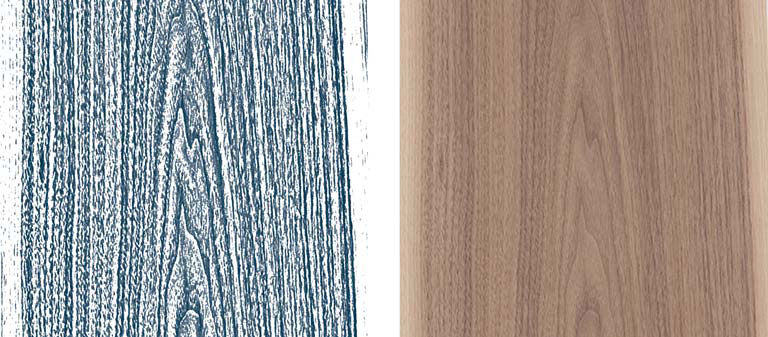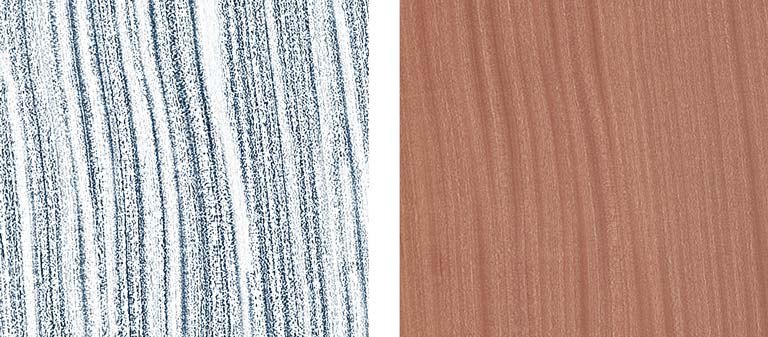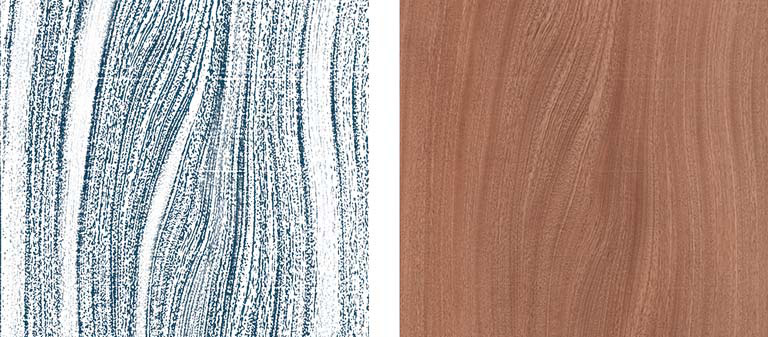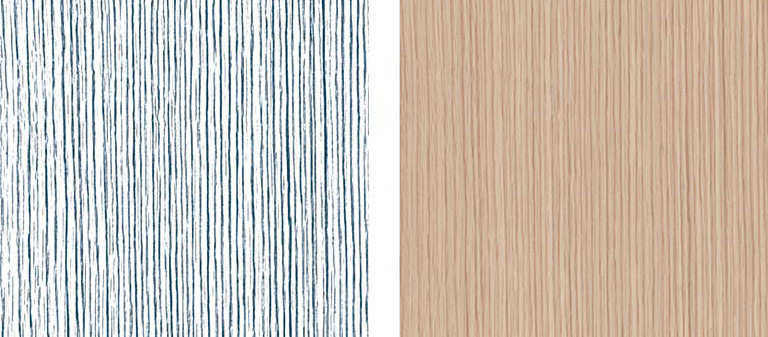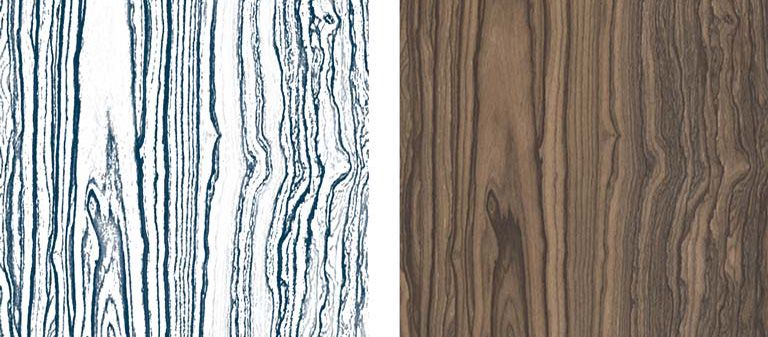Grain is formed by the tree's annual growth rings—it's tight in slow growing trees, widely spaced in fast growth, and variably spaced in trees that grow differently at different times of the year. In veneer, grain appears as the long lines that typically run parallel to each other down the length of the leaf or panel. Grain varies based on the specie, the way it's cut, and whether or not the veneer is figured.
Cathedral
Cathedral grain pattern is easily identified by the loop or “cathedral” in the center with straighter grain along the edges. Cathedral grain is only produced in flat cut veneers.
Interlocked
Interlocked grain is produced by trees that grow in a spiral (like the threads of a screw). Many tropical trees grow in this way and in some species, the spiral changes direction from year to year, producing an interlocked grain, noted for its light and dark patterns and lustrous surface. Most noticeable in quarter-cut veneers, this grain can produce ribbon stripe, mottled, curly, and fiddleback figures.
Irregular
Irregular grain is produced when a tree swirls or twists in unexpected ways due to knots, burls, crotches, or branches.
Spiral
Spiral grain is created naturally when a tree twists as it grows—due to stress, prevailing winds, obstacles, or other reasons. Wood fibers are oriented at an angle to the annual growth rings, creating a spiral pattern.
Straight
Straight grain pattern, as the name suggests, is pattern with lines that run parallel to each other and to the tree’s trunk.
Wavy
Wavy grain pattern is produced when wood fibers run up and down the tree in a wavy pattern rather than in straight lines. A fairly rare pattern, it’s most clearly seen in flat cut veneers and often, but not always, results in a curly figure.

